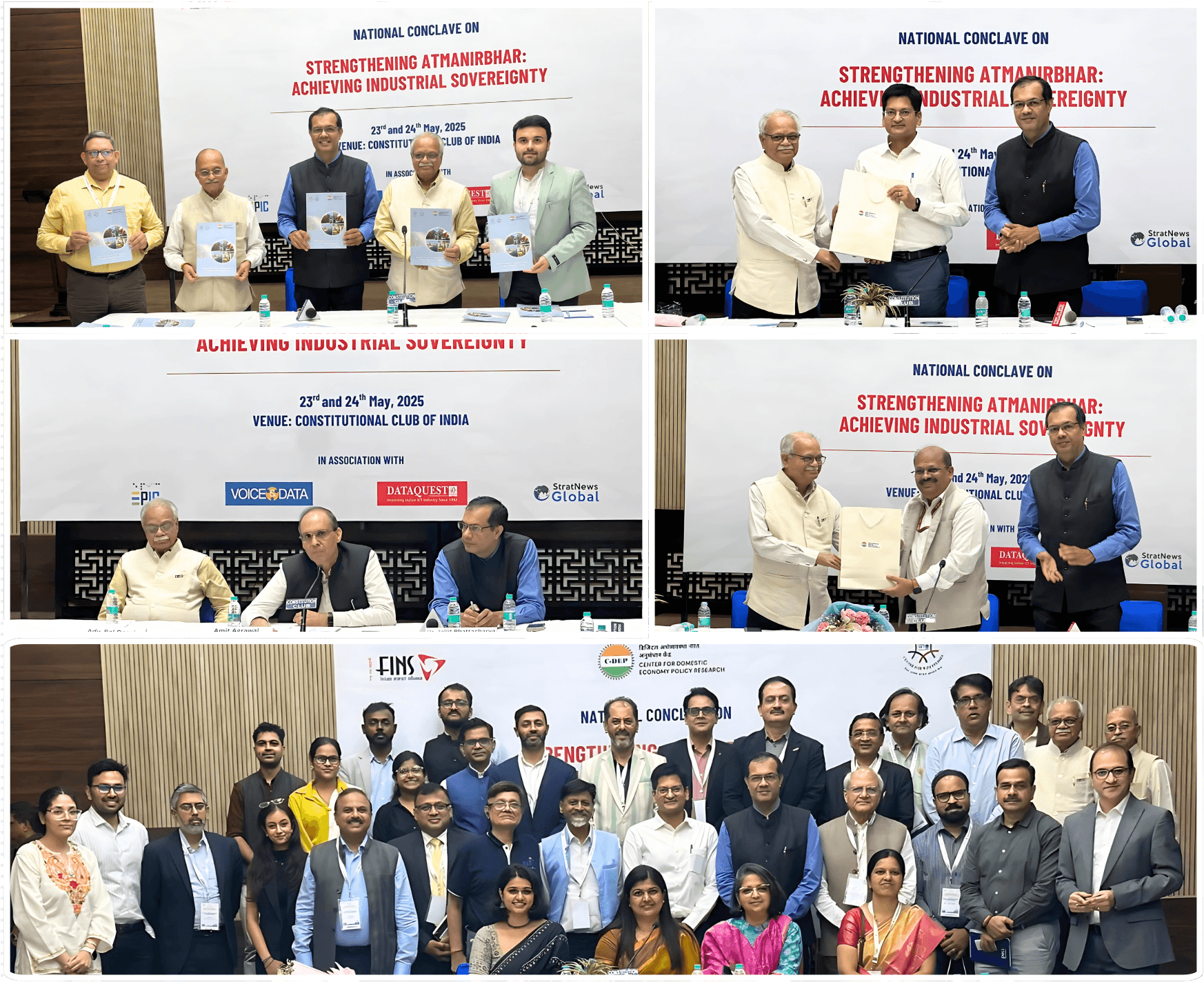National Conclave on Strengthening Atmanirbhar Bharat: Achieving Industrial Sovereignty
The global trade landscape is undergoing a
decisive transformation.
Governments across the world are reassessing their trade dependencies,
reorienting industrial policy, and competing to gain technological
supremacy. Countries are increasingly prioritizing nearshoring and
reshoring strategies to mitigate supply chain and tariff-related
challenges.
Such a shift has accelerated the realignment of global supply chains,
with the formation of exclusive supply chain coalitions such as the Chip
4 Alliance and the Indo-Pacific Economic Framework (IPEF) along with
potential zero-tariff trade zones among select countries. For India,
these global shifts present both an imminent challenge and a strategic
opportunity. As global trade fragments and access to critical
technologies becomes more exclusive, the need to strengthen domestic
industrial capabilities has become critical thereby making the pursuit
of Atmanirbharta more relevant than ever.
India has a golden opportunity to boost exports, increase manufacturing
jobs, and become a robust manufacturing hub as new global value chains
emerge.
In this context, the Centre for Domestic Economy Policy Research
(C–DEP.org), in collaboration with the Forum for Integrated National
Security (FINSIndia.org) and the Centre for WTO Studies (CWS), are
hosting a National Conclave on ‘Strengthening Atmanirbhar: Achieving
Industrial Sovereignty’.
This year’s Conclave is aimed at facilitating dialogue on specific
regulatory, policy, and trade remedial reforms that need to be
deliberated upon in order to accelerate India’s journey towards
industrial sovereignty and becoming Viksit.
Conclave Objectives
1.To identify relevant regulatory interventions required to safeguard
and grow India’s chemical industry in the face of shifting global value
chains.
2.To chart a roadmap to achieve pharmaceutical sovereignty by expanding
domestic API production, securing critical raw material supply chains,
and investing in drug and vaccine research.
3.To explore avenues for industry-government partnership to further
strengthen India’s digital infrastructure and telecommunications
industry.
4.To explore strategies for advancing India’s electronics and
semiconductor ecosystem by enhancing domestic manufacturing capabilities
and securing supply chains for critical raw materials.


